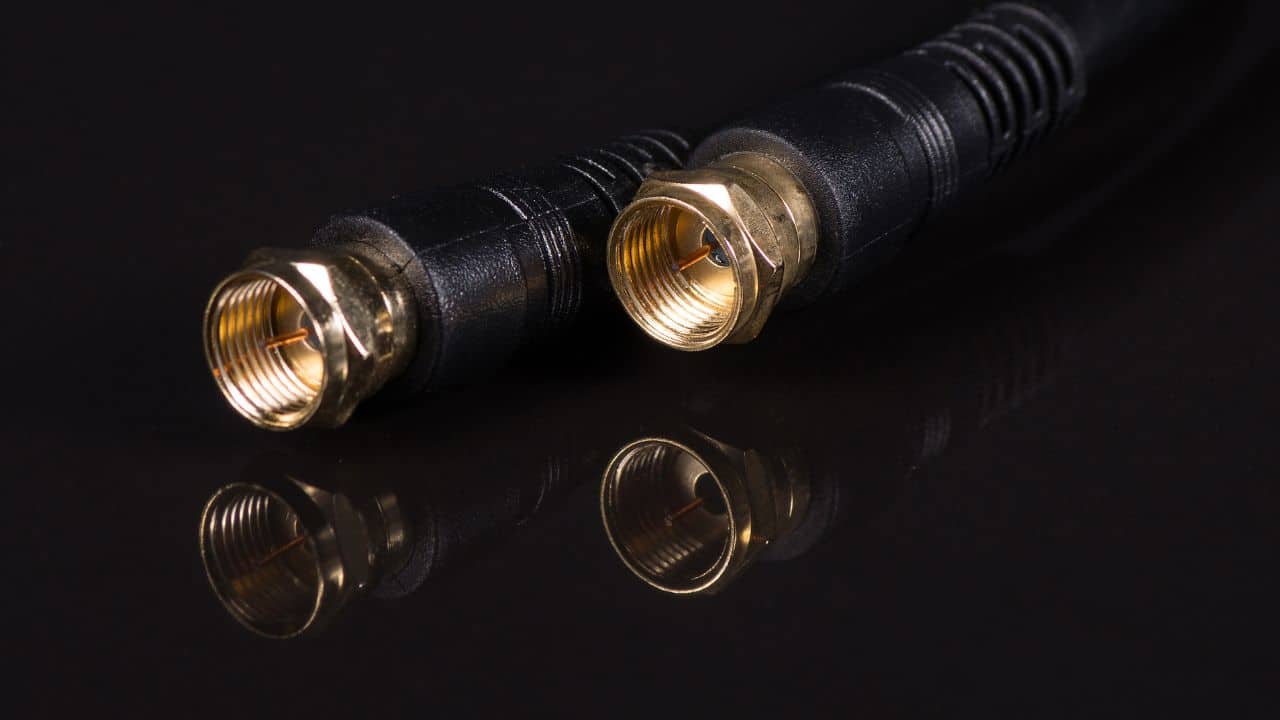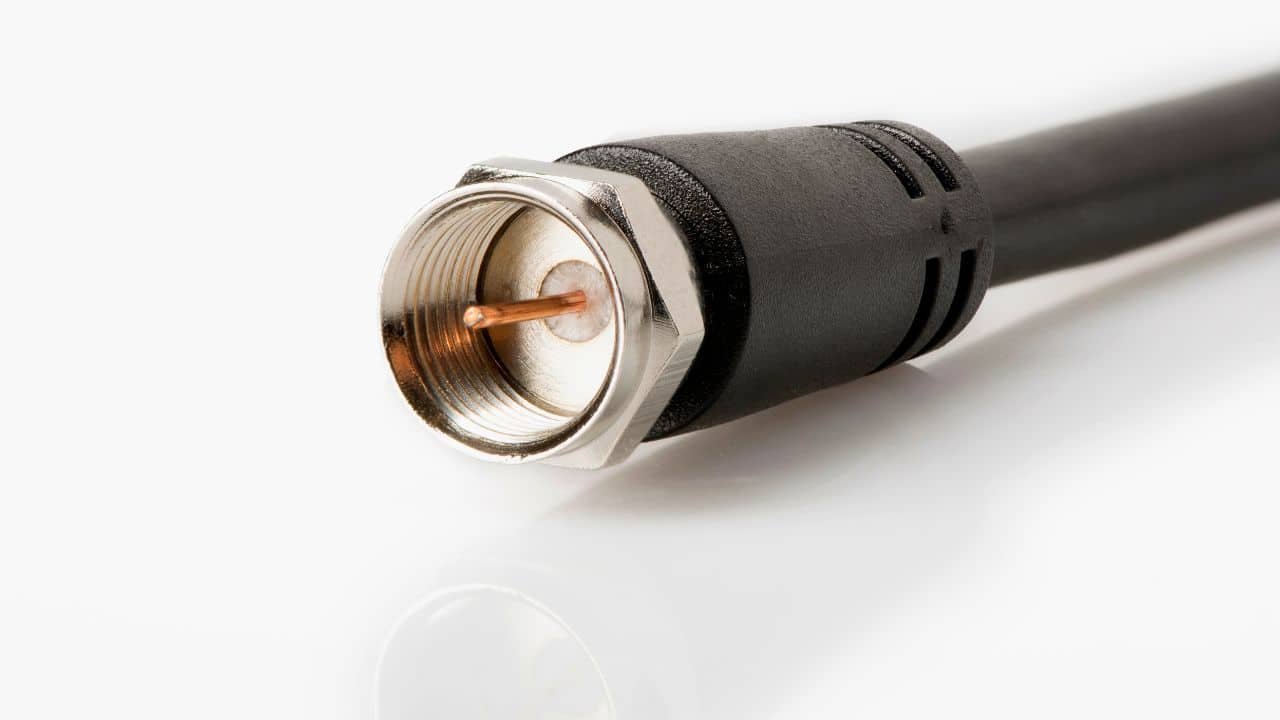Coaxial cable is a medium for transmitting data or information through electrical signals. For more details, we will discuss in full, starting from the understanding, functions, types, advantages and disadvantages of coaxial cable in this article.
Look carefully at the following material!

Coaxial cable is a means of transmitting information or data through electrical signals.
Where the coaxial cable will later become a medium in the process of distributing data using electrical signals.
The development of this type of cable itself started in 1920. And of course until now its use is still being developed with various specifications that make it easier.
Coaxial Cable Function
The coaxial cable functions are as follows:
- The main function of the coaxial cable is a link between computer hardware components and other devices.
- Coaxial cable is also used as a medium that is able to block the risk of signal interference. This is because the constituent components consist of copper wires with metal shields.
- The function of the coaxial cable that is no less important is that it is used as a signal divider with a relatively high frequency. This is because coaxial cable is indeed designed with qualified capabilities for the purposes of channeling groups of conversational frequency channels or television programs.
Types of Coaxial Cables

Above, we have discussed what a coaxial cable is, complete with its various functions. So, this time you also need to listen to the discussion about the types of coaxial cables and their specifications.
The goal, of course, is for users to be able to choose the type of coaxial cable that best suits their needs later.
1. Hard Line Coaxial
Hard line coaxial cable is a type of cable that relies heavily on round copper tubing. And of course also on metal combinations that function as protectors.
For example, materials such as aluminum or copper. This type of cable is usually intended to connect the transmitter to the antenna.
2. Triaxial Cable
Triaxial cable is a type of coaxial cable that has greater resistance. Especially in terms of the process of dispelling all kinds of external disturbances. This is because this type of coaxial cable has a large insulating layer.
Not only that, for additional conductors and installed bandwidth generally also has a larger capacity. With this specification, the price of a triaxial cable will generally be priced at a higher price than its predecessor.
3. Rigid Line Coaxial
Rigid line coaxial is a coaxial cable that uses two copper tubes and will function as a pipe. This type of cable in terms of physical form can be said to be quite rigid.
So do not be surprised if the rigid line coaxial cable does not allow it to be rolled up. For its own use, generally Gigid line coaxial cable is more used as a radio frequency transmission medium. And of course the implementation is more for indoor use .
4. Radiating Cable
This Radiating Cable is almost similar to hard line coaxial, but differs in a special slot that is specially arranged to match the wavelength where the cable will be used. This type of coaxial cable will generally be installed in elevators, military equipment and underground tunnels.
Advantages and Disadvantages of Coaxial Cables to Consider

Coaxial cable has several advantages and disadvantages that are important to know. The goal is for consideration before use to make it more efficient.
Advantages of Coaxial Cable
Among the advantages of coaxial cable are:
- Transmit signals – electrical signals that are greater than the transmission line of ordinary wire.
- Supports microwave paths over short distances.
- The maximum distance of the cable is longer when compared to twister pair cable.
- Has a smaller current resistance at higher frequencies.
- Relatively cheap in terms of the price of the cable.
- Classified as strong enough to withstand interference from the external sector.
- Can be used for the purposes of analog data transmission process and digital data transmission.
- Has a bandwidth that is somewhat larger.
- The possibility of experiencing trouble is smaller than other cables with similar functions.
Disadvantages of Coaxial Cable
The disadvantages of coaxial cable are:
- Many admit that the process of installing coaxial cable is a bit more difficult and quite complicated.
- Subsequent maintenance costs are still quite expensive.
- The quality of the coaxial system is easily affected by temperature variations.
- The maximum limit for device connections is only 30 units.
- Requires repeaters to be able to amplify the signal, because of the relatively large attenuation.
- Laying cables on the ground is prone to physical disturbances that can break the connection or connection.
- The character of the cable is fairly stiff so it doesn’t allow it to be rolled up in a circle.

As a data transmission medium , coaxial cable of course requires constituent components. One very important component is the connector . Which function of this connector is to distribute cables to other devices.
This coaxial cable connector is also divided into several types. Here is the full discussion that you can see:
- BNC (Bayonet Neil-Concelman) which is used to transmit to television or CCTV equipment, transmitting audio and video signals with a frequency of 4GHz.
- TNC (Threaded Neil-Concelman) is commonly used for audio transmission purposes on telephones. The level of operational control itself can generally reach 12 GHz.
- SMA (SubMiniature version A) is a type of connector used for cell phones and WI-FI antenna systems as well as microwave and radio systems. This coaxial cable connector can operate up to 18GHz only.
- SMB (SubMiniature version B), this type of connector is generally applied to the process of transmitting communication hardware.
- RCA (Radio Corporation of America) is commonly referred to as the A/V connector. This connector is the most standard type of connector for audio and video transmission. Its use itself is commonly found in electronic devices such as televisions and others. What characterizes this connector is that it is divided into 3 types of yellow, white and red.
- The F connector is a connector often used on digital and cable television. This coaxial cable connector usually uses RG6 or RG59 cable.
How Much Does Coaxial Cable Cost?
The price of coaxial cable can be said to be very diverse in the market. The price of this cable is of course influenced by several things. For example, adjusting to the length of the cable, the type and device to be used.
For those of you who are planning to buy, here is a list of the latest coaxial cable prices that you can use as a reference.
- BNC Connector Metal for RG6 or RG59 coaxial cable for IDR 3,000.
- Avtech R6 Coaxial cable for IDR 1,123,000.-.
- Coaxial cable R59 + maintech power 300 for IDR 1,078,700.
- Coaxial digital audio cable for IDR 132,000.
- RG402 semi-rigid coaxial cable for IDR 37,000.
Conclusion
That’s more or less a complete review of coaxial cables that you can learn. Starting from a discussion of what a coaxial cable is, its functions, types and even the types of connectors have been thoroughly discussed.
Not only that, you can also estimate the costs required by knowing the price list for the various types of coaxial cables above. Hopefully the reviews above are quite helpful, huh?
